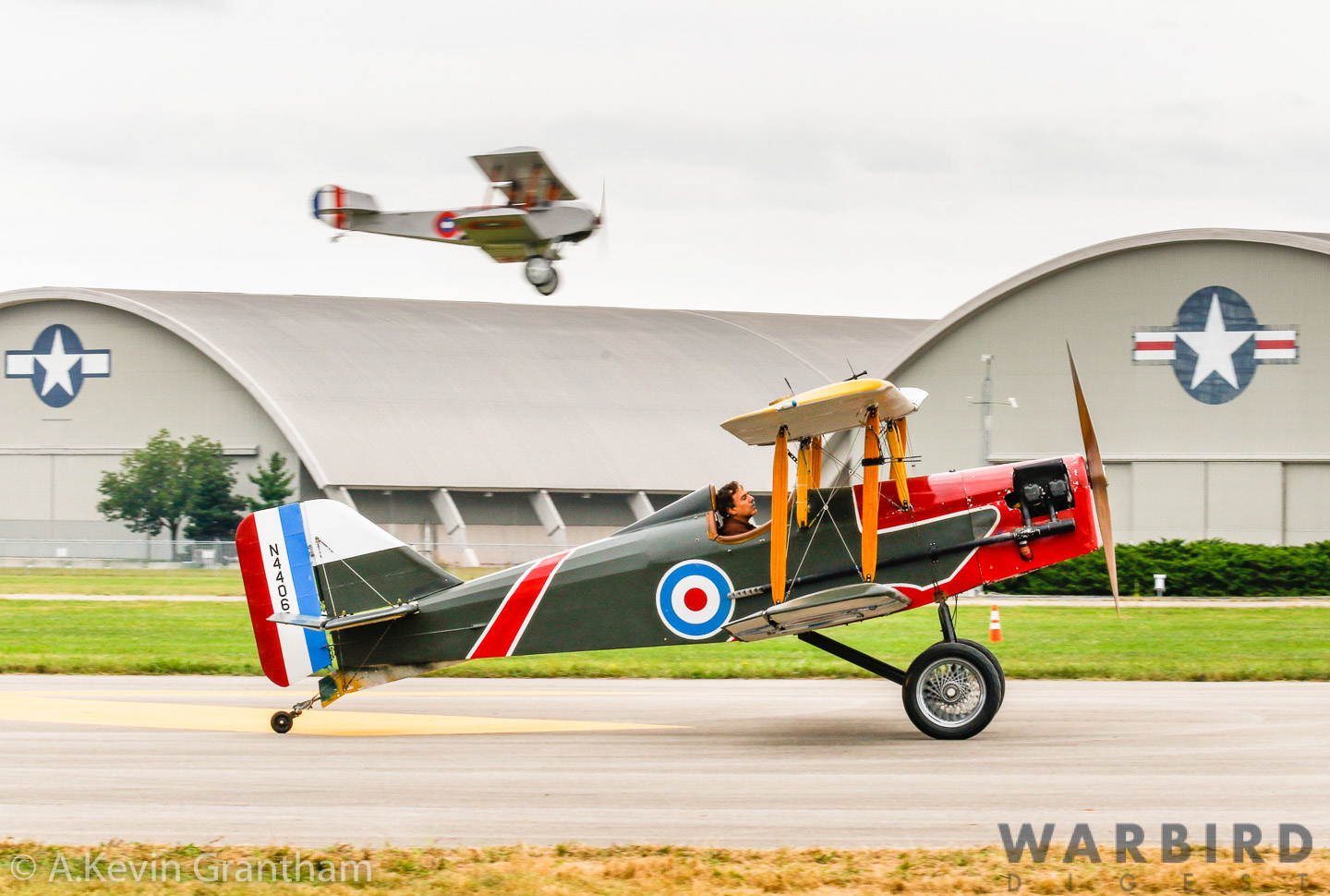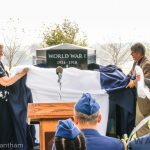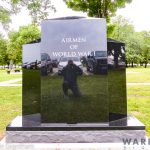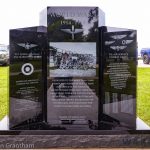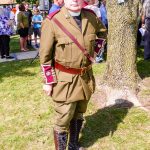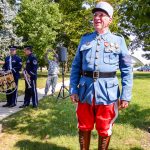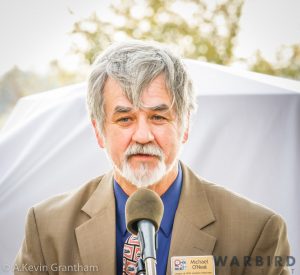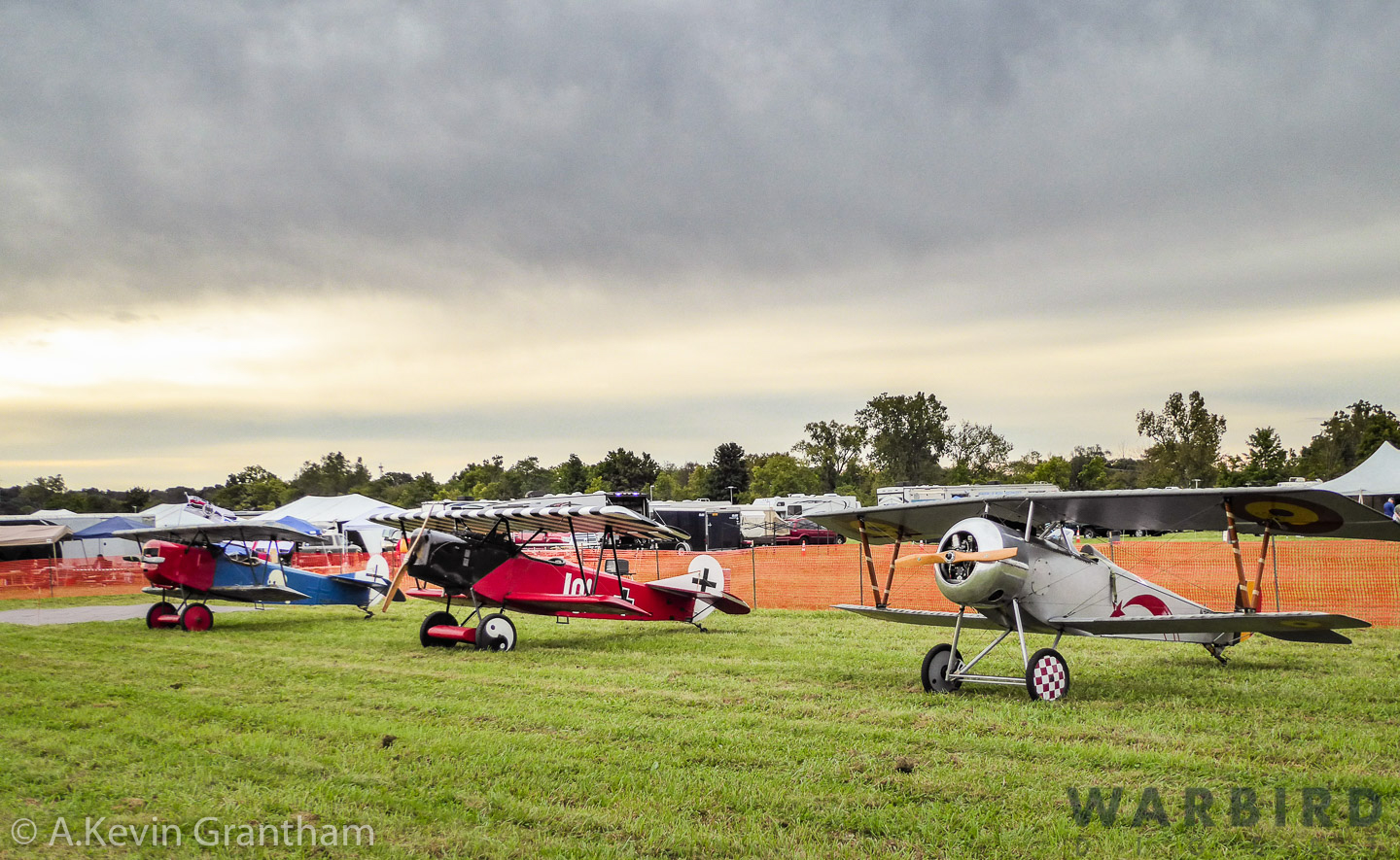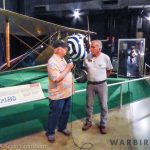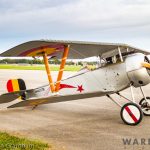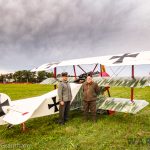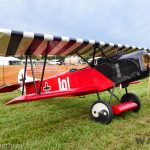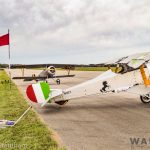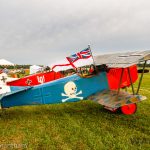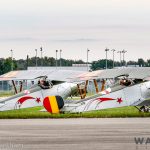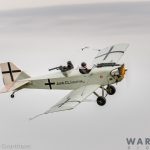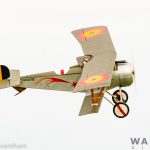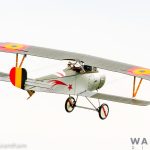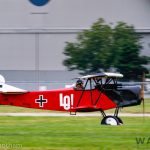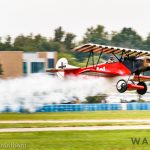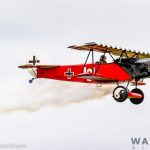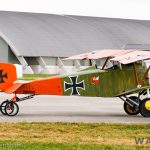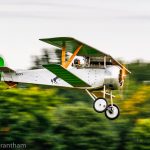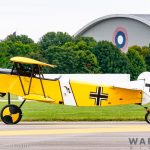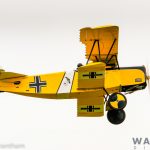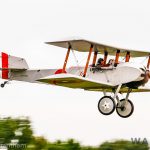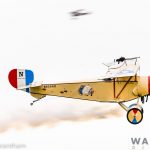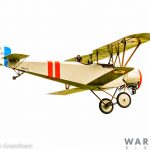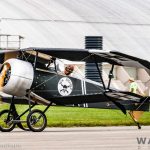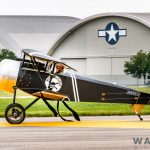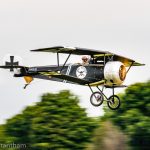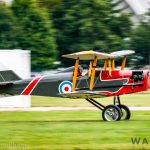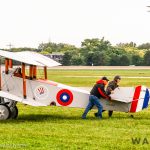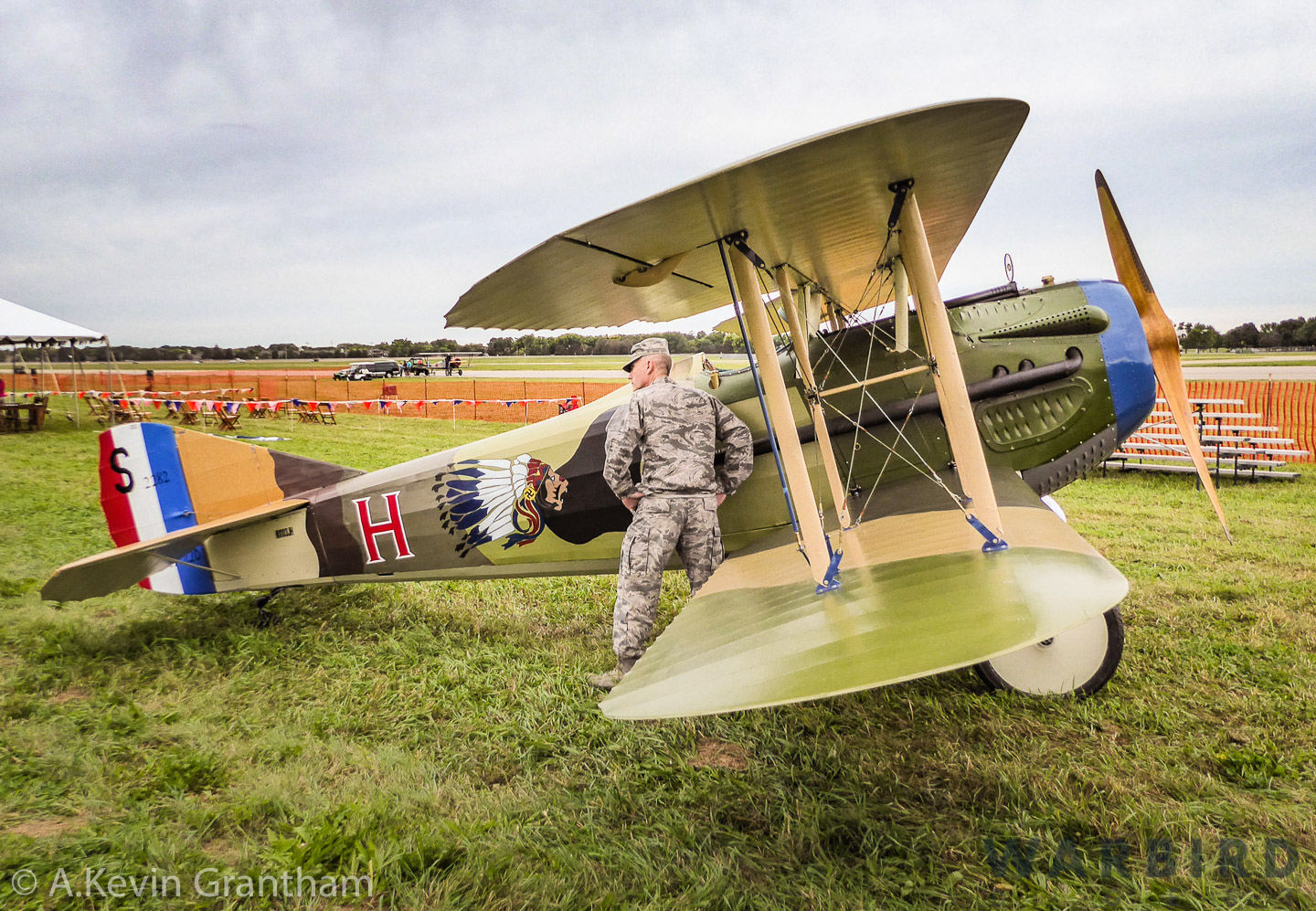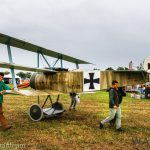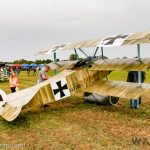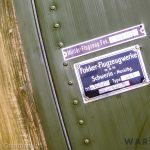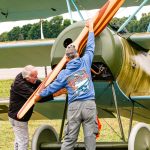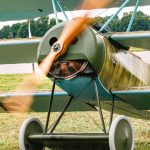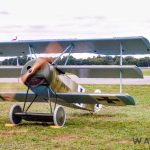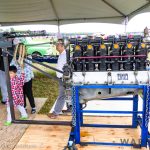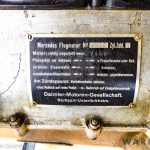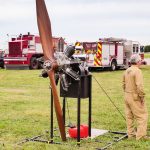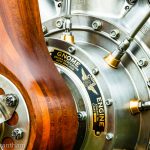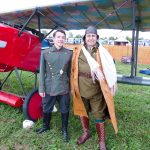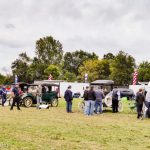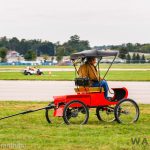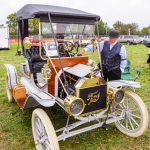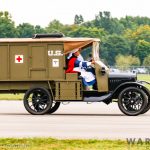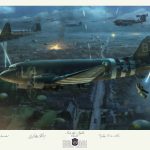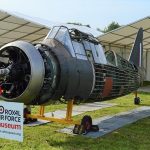Dawn Patrol Rendezvous
by A. Kevin Grantham
The National Museum of the United States Air Force held their bi-annual Dawn Patrol Rendezvous over the weekend of September 21-23, 2018. The event focused on commemorating the centennial for the end of World War I with living history impressions, replica aircraft, and vintage cars.
Festivities began at 1:00 PM on Friday, September 21, 2018 with the dedication of a new World War I monument, sponsored by the League of WWI Aviation Historians (LWWIAH). Special guests included relatives of a number of legendary WWI aviators:
- Ms. Nancy Hall Rutgers, daughter of Lafayette Escadrille pilot Lt. James Norman Hall
- Lt. Col. Nicholas Rutgers, great-grandson of Lt. James Norman Hall
- Mr. and Mrs. Raoul Lufbery, Mr. Lufbery is the great-nephew of Lafayette Escadrille Pilot, Major Raoul Lufbery
- Mr. William Nungesser, a cousin of the great French ace and Layfayette Escadrillle pilot Lt. Charles Nungesser
- Mr. Barney Landry, son of WWI pilot Lt. Barney Landry, 35th Aero Squadron
- Ms. Tarra Stenseth Riley, great-niece of WWI ace Lt. Martinus Stenseth, 26th Aero Squadron
Robert Kasprzak moderated the ceremony that opened with a very loud and moving flyover by an B-1 bomber in full afterburner. Ms. Mary Muller, daughter of WWI pilot Lt. Stephen Thomas; Col. Carl Fishbach, Commander 7th Operations Group, Dyess AFB, Texas; and Lt. Gen. (Ret.) John Hudson, Director, NMUSAF gave speeches that helped mark this event. Perhaps, the words of Michael O’Neal, President, LWWIAH best captured the background and true motivation for installing this tribute to the American aviators of World War I:
”In the early morning hours of 12 September 1918, just over one hundred years ago today, the combined forces of the United States and France launched the Saint-Mihiel offensive. Its purpose was to straighten out the bulge in the front lines of Saint-Mihiel in preparation for the final autumn offensives which would bring the war to end all wars to a close just two months hence. In support of this offensive, nearly 1,500 aircraft, French, British and American, were united under a single command. It was the largest concentration of airpower assembled during the Great War, and it signaled the maturation of US airpower as a strategic force in their prosecution of a war. In the long years prior to 1918, as the war began to envelop Europe and long before the United States entered the conflict, US citizens were already volunteering for duty with the British Royal Flying Corps and the French Aeronautigue. Being as early as 1915, these volunteers paved the way for all the American aviators that followed. As a vanguard, they deserve all we can afford them. But here, in Dayton, under this canopy of old growth trees in the very shadow of the National Museum of the United States Air Force where there is an abundance of tributes to American aviation history and the men and women who animated it, there’s been no memorials to our World War I aviators. Today, under a welcoming sky and in attendance of the families of many of these men, I am delighted to say—this is no longer the case. We are gathered here today to dedicate this lasting tribute to these aviation pioneers. In this one-hundredth anniversary of the end of the First World War, it is my humble honor to represent the League of WWI Aviation Historians whose primary mission is the preservation of this important part of our national heritage. Today, with joyful hearts, we offer this tribute to our first aviators. Today, in quiet respect, we remember their sacrifice. And today, through the generous donations of family, friends and local charitable organizations, and upon this hundredth anniversary of their service — we dedicate this monument.”
The airshow segment for the Dawn Patrol Rendezvous commenced on Sunday morning at 9:00am. Under cloudy skies with a slight, but chilly northwesterly wind, aircraft began taking to the air for a two-hour demonstration that included dogfighting techniques used during the first global conflict. Stephen Skinner, author of The Stand: The Final Flight of Lt. Frank Luke, Jr., narrated the event, pointing out key characteristics for each aircraft while highlighting the pilot as well. He also interjected interesting historical references on the evolution of aviation, and how this developing technology influenced battle tactics during the 1914-1918 period. Skinner later brought some of the performing airplanes behind the crowd line so spectators could get a better view of the craft, taking the opportunity to interview the pilot and take questions from the surrounding audience. It was a unique way to promote both aviation and history at the same time!
Most of the participating aircraft were scaled down replicas powered by a modified Volkswagen auto engine, a far more reliable powerplant than period engines of WWI. Despite their reduced size, these replicas ably demonstrated the strengths and weaknesses of each type they represented.
There were also a few full-scale replicas on static display, including a SPAD XIII from Andy Parks’ Vintage Aero Flying Museum at Platte Valley Airport, in Fort Lupton, Colorado. “It has taken us over five years to build this from scratch,” said VAFM volunteer Norm Nickoly. “It is built exactly the way it would have been built in 1918 except for a modern Lycoming engine. It also has heavier wheels with brakes and a tail wheel instead of a skid because we have to land on a [concrete] runway.”
Fred Murrin also brought his full-size replica Fokker Dr.I triplane to Dayton. Mr. Murrin is one of the driving forces behind all of the Dawn Patrol Rendezvous gatherings dating back to 1996. Murrin built his triplane from plans he acquired during the 1970s. Since that time, he has modified this replica design to represent the original artifact more authentically, including the addition of an original, WWI-era Le Rhône rotary engine which Mr. Murrin graciously ran for the public during the show.
Radio controlled aircraft took over the airspace in between the main flying events. Over a hundred, beautifully-scaled flying models adorned the occasion. Your author was in awe of the skill and craftsmanship that went into building these highly detailed machines. In addition to the non-stop flying, there were also educational displays of WWI-period engines, machine guns, and vintage cars. The LWWIAH also held hourly lectures encompassing almost every aspect of WWI aviation. There were so many activities on site that one could hardly wish for more.
All in all, the Dawn Patrol Rendezvous was a fantastic experience that accurately represented a time when many thought the world was truly coming apart. Hopefully, events like this will help educate forthcoming generations to have a higher respect for their history so that tragedies like WWI will not take place in the future.
Note: The author would like to extend a big thank you to Rob Bardua and all of the NMUSAF Public Relations staff for making this article possible.
Many thanks to A.Kevin Grantham for going to the Dawn Patrol Rendezvous on our behalf. We hope our readers enjoy his story and looking through the variety of images he captured there. The event seems to have been a great success for all concerned!







